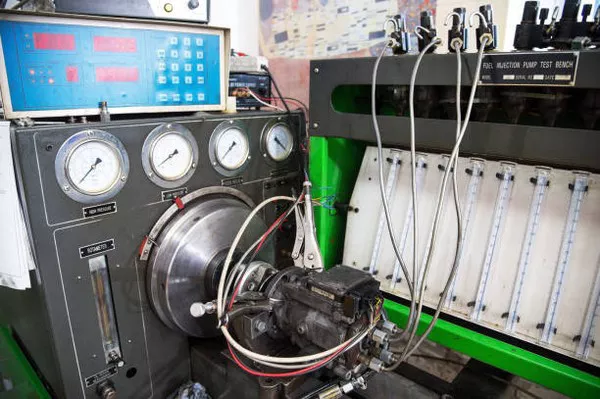Power outages can disrupt both residential and commercial activities, leading to inconveniences and potential losses. Generators provide a reliable solution by offering an alternative source of electricity during such interruptions. However, ensuring the seamless and safe operation of these generators, particularly in preventing dangerous back-feeding into the grid, requires effective control mechanisms. This is where generator interlocks come into play. This article delves into the workings of generator interlocks, exploring their components, operation, and importance in safeguarding electrical systems.
What is a Generator Interlock?
A generator interlock is a safety device installed on electrical panels to manage the interaction between a home’s or building’s main electrical supply and a backup generator. Its primary function is to prevent both power sources from being active simultaneously, thereby averting the risk of back-feeding electricity into the utility grid. This is crucial for protecting utility workers from electric shock and ensuring the integrity of the electrical system.
Components of a Generator Interlock System
A typical generator interlock system consists of several key components:
Interlock Kit: This includes the physical hardware that fits onto the main electrical panel, often comprising sliding or rotating plates that control breaker positions.
Circuit Breakers: These include the main breaker that controls the grid power supply and the breaker that connects the generator.
Generator Input Plug: A dedicated connection point where the generator feeds power into the electrical system.
Transfer Switch: Although not always part of a basic interlock system, advanced setups might incorporate a transfer switch to automate the power transfer process.
How Does a Generator Interlock Work?
The interlock system operates through a mechanical interaction that ensures only one power source can supply electricity to the circuit panel at any given time. Here’s a step-by-step breakdown of its functioning:
Normal Operation: During regular conditions, the main breaker is in the “on” position, allowing grid electricity to power the circuits in the building. The generator breaker remains in the “off” position.
Power Outage: When a power outage occurs, the main breaker is manually turned “off,” disconnecting the building from the utility grid.
Engaging the Generator: The generator is started, and the generator breaker is turned “on.” The interlock mechanism ensures that the generator breaker cannot be turned on unless the main breaker is off, thus preventing any chance of back-feeding.
Restoring Grid Power: When grid power is restored, the generator breaker is turned off, and the main breaker is switched back on. The interlock mechanism ensures that these actions cannot be done simultaneously.
Advantages of Using a Generator Interlock
The use of generator interlocks offers several benefits:
Safety: By mechanically ensuring that grid power and generator power cannot be connected at the same time, interlocks protect utility workers and prevent electrical fires and damage.
Cost-Effective: Interlock kits are generally more affordable compared to automatic transfer switches, making them a cost-effective solution for ensuring safe generator operation.
Ease of Installation: Installing a generator interlock is typically straightforward and can often be done without professional assistance, though consulting with an electrician is recommended.
Compliance: Many local electrical codes require some form of interlock or transfer switch for generator installations to ensure safety, and interlocks help in meeting these regulatory requirements.
Installation and Usage Considerations
While installing a generator interlock is relatively simple, there are several considerations to keep in mind to ensure it functions correctly and safely:
Compatibility: Ensure the interlock kit is compatible with your electrical panel. Interlocks are often designed for specific panel models and brands.
Professional Installation: Though some homeowners may feel comfortable installing an interlock themselves, hiring a licensed electrician ensures compliance with local codes and safe operation.
Regular Testing: Periodically test the interlock mechanism to ensure it operates smoothly and that there are no obstructions or malfunctions.
Proper Labeling: Clearly label the breakers and interlock system to prevent confusion during operation, particularly in emergency situations.
Maintenance of Generators: Regular maintenance of the generator is crucial for ensuring it operates effectively when needed. This includes checking oil levels, battery condition, and overall functionality.
Challenges and Limitations
Despite their advantages, generator interlocks are not without challenges:
Manual Operation: Unlike automatic transfer switches, interlock systems require manual operation, which means someone must be present to switch between power sources during an outage.
Learning Curve: Users must be familiar with the operation of the interlock system to avoid mistakes during power transfer.
Potential for Wear: Mechanical components of the interlock can wear out over time, necessitating regular inspections and possible replacements.
Load Management: Users must manage the electrical load manually, ensuring the generator is not overloaded by turning off non-essential circuits.
Alternatives to Generator Interlocks
While generator interlocks provide a manual solution for safe power transfer, there are alternatives that might be more suitable for certain applications:
Automatic Transfer Switches (ATS): These switches automatically detect power outages and switch to generator power without manual intervention. They offer convenience but at a higher cost.
Manual Transfer Switches: Similar to interlocks, but typically involve a separate switch panel to transfer power between the grid and generator, providing a clear and controlled process.
Hybrid Systems: Some systems combine features of both interlocks and ATS, offering a balance between cost and automation.
See Also HOW TO OPERATE A GENERATOR
Conclusion
Generator interlocks play a vital role in ensuring the safe and efficient use of backup generators. By mechanically preventing simultaneous connection of grid and generator power, they protect utility workers, homeowners, and property. While they require manual operation and regular maintenance, their cost-effectiveness and ease of installation make them a popular choice for many users. Understanding the operation and benefits of generator interlocks can help users make informed decisions about their backup power systems, ensuring reliability and safety during power outages.

